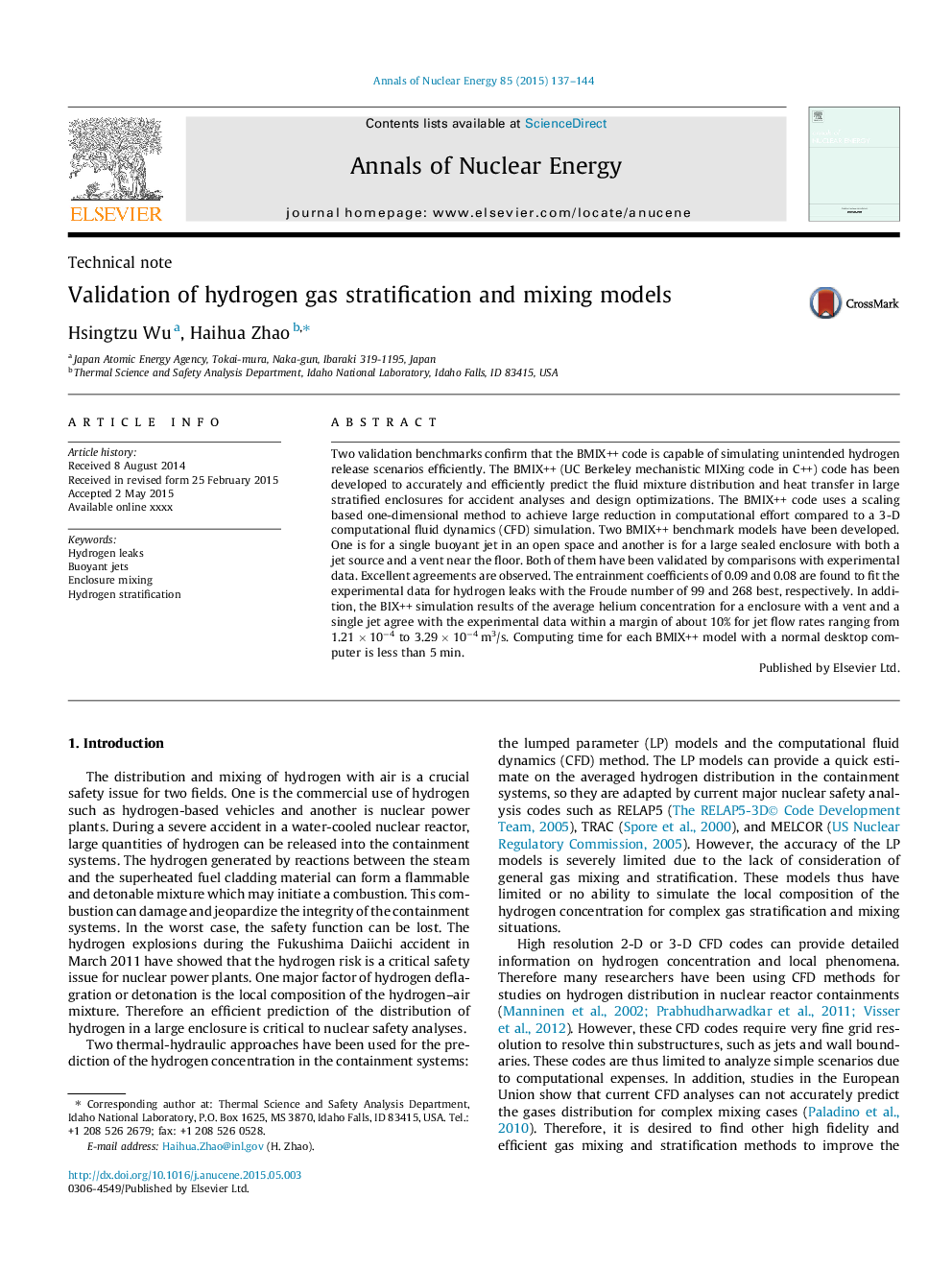| Article ID | Journal | Published Year | Pages | File Type |
|---|---|---|---|---|
| 8068173 | Annals of Nuclear Energy | 2015 | 8 Pages |
Abstract
Two validation benchmarks confirm that the BMIX++ code is capable of simulating unintended hydrogen release scenarios efficiently. The BMIX++ (UC Berkeley mechanistic MIXing code in C++) code has been developed to accurately and efficiently predict the fluid mixture distribution and heat transfer in large stratified enclosures for accident analyses and design optimizations. The BMIX++ code uses a scaling based one-dimensional method to achieve large reduction in computational effort compared to a 3-D computational fluid dynamics (CFD) simulation. Two BMIX++ benchmark models have been developed. One is for a single buoyant jet in an open space and another is for a large sealed enclosure with both a jet source and a vent near the floor. Both of them have been validated by comparisons with experimental data. Excellent agreements are observed. The entrainment coefficients of 0.09 and 0.08 are found to fit the experimental data for hydrogen leaks with the Froude number of 99 and 268 best, respectively. In addition, the BIX++ simulation results of the average helium concentration for a enclosure with a vent and a single jet agree with the experimental data within a margin of about 10% for jet flow rates ranging from 1.21Â ÃÂ 10â4 to 3.29Â ÃÂ 10â4Â m3/s. Computing time for each BMIX++ model with a normal desktop computer is less than 5Â min.
Keywords
Related Topics
Physical Sciences and Engineering
Energy
Energy Engineering and Power Technology
Authors
Hsingtzu Wu, Haihua Zhao,
